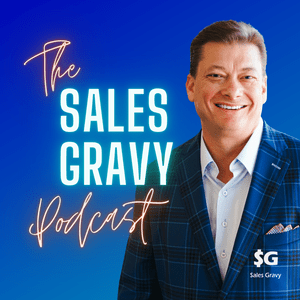Your Multi-Channel Prospecting Blueprint: How Top Sales Reps are Using LinkedIn
If you're only showing up in one place, you're not showing up at all, which is why top sales reps are making multi-channel prospecting a priority and leveraging LinkedIn to get ahead.
"The reality of buying and selling is that everyone has different preferences, and as a salesperson, we need to use as many tools as possible. If you are only making calls or sending emails, you’re missing [prospects] that don’t answer calls or reply to emails," says Daniel Disney, one of the world's leading social selling experts and founder of The Daily Sales.
In today's sales landscape, understanding and navigating the "Prospecting Maze" is no longer optional—it's essential.
The Prospecting Maze: Why Single-Channel Fails
The modern buyer isn’t linear. They don’t follow a step-by-step funnel. Instead, they’re zig-zagging across digital touchpoints: social feeds, emails, websites, calls, review sites, podcasts, webinars, and peer referrals.
A prospect might first see your company mentioned in a LinkedIn comment, hear about you from a colleague, get a cold call later that week, and convert after reading third-party reviews.
This is where multi-channel outreach gives you a powerful edge. And in the world of B2B, LinkedIn often becomes your competitive advantage.
Why Using LinkedIn in Your Multi-Channel Prospecting Works
Among your core outreach tools—phone, email, social—LinkedIn stands out. It doesn’t replace cold calling. It reinforces it. Used strategically, it extends your credibility, warms up cold conversations, and drives responses other channels can’t.
Here’s what makes LinkedIn a powerhouse in your multi-channel approach:
Professional Credibility: A strong LinkedIn presence builds instant trust. Prospects see who you are, what you’ve done, and how you show up in your industry.
Deep Prospect Insights: LinkedIn offers unmatched visibility into a buyer’s job history, interests, content, and network. That context powers personalization that cuts through the noise.
Soft-Touch Engagement: You don’t have to push. LinkedIn allows you to comment, share, and message in a way that builds rapport, without asking for time or commitment right away.
Message Amplification: Your posts and interactions can reach 2nd- and 3rd-degree connections. That passive visibility compounds your prospecting efforts.
The LINK Framework: Your Multi-Channel Prospecting System
You don’t need to spend hours scrolling LinkedIn. In fact, you can see results in just 15 focused minutes a day — if you have a plan. That’s where the LINK Framework comes in. It’s a repeatable system for integrating LinkedIn with your outreach strategy and making every touchpoint count.
L – Leverage LinkedIn for Insight
Your first call sets the tone. Before you pick up the phone, use LinkedIn to gather quick intelligence such as your prospect’s role, recent posts, company news, and shared connections.
Example Cold Call Opener:
“Hi [Prospect Name], this is [Your Name] with [Your Company]. I'm calling because I saw [Your Company] recently [published an article on X / celebrated a milestone / hired new talent], and it made me think about how other leaders in [their industry] are grappling with [specific problem that your solution solves].”
I – Integrate Channels with Purpose
Don’t silo your outreach. Each touch should build on the last, referencing LinkedIn in your emails, following up calls with connections, and weaving consistent messaging across every interaction.
Example Touch Pattern:
Touch 1: Phone call + voicemail
Touch 2: Immediately after your call, send a LinkedIn connection request
Touch 3: Email referencing LinkedIn or voicemail
Touch 4: Comment on their recent post or share a relevant industry article
Touch 5: Second phone call
Touch 6: LinkedIn message with relevant insight or asset
N – Nurture Through Engagement
Your prospects see who shows up. Stay in their world by regularly interacting with their content.


